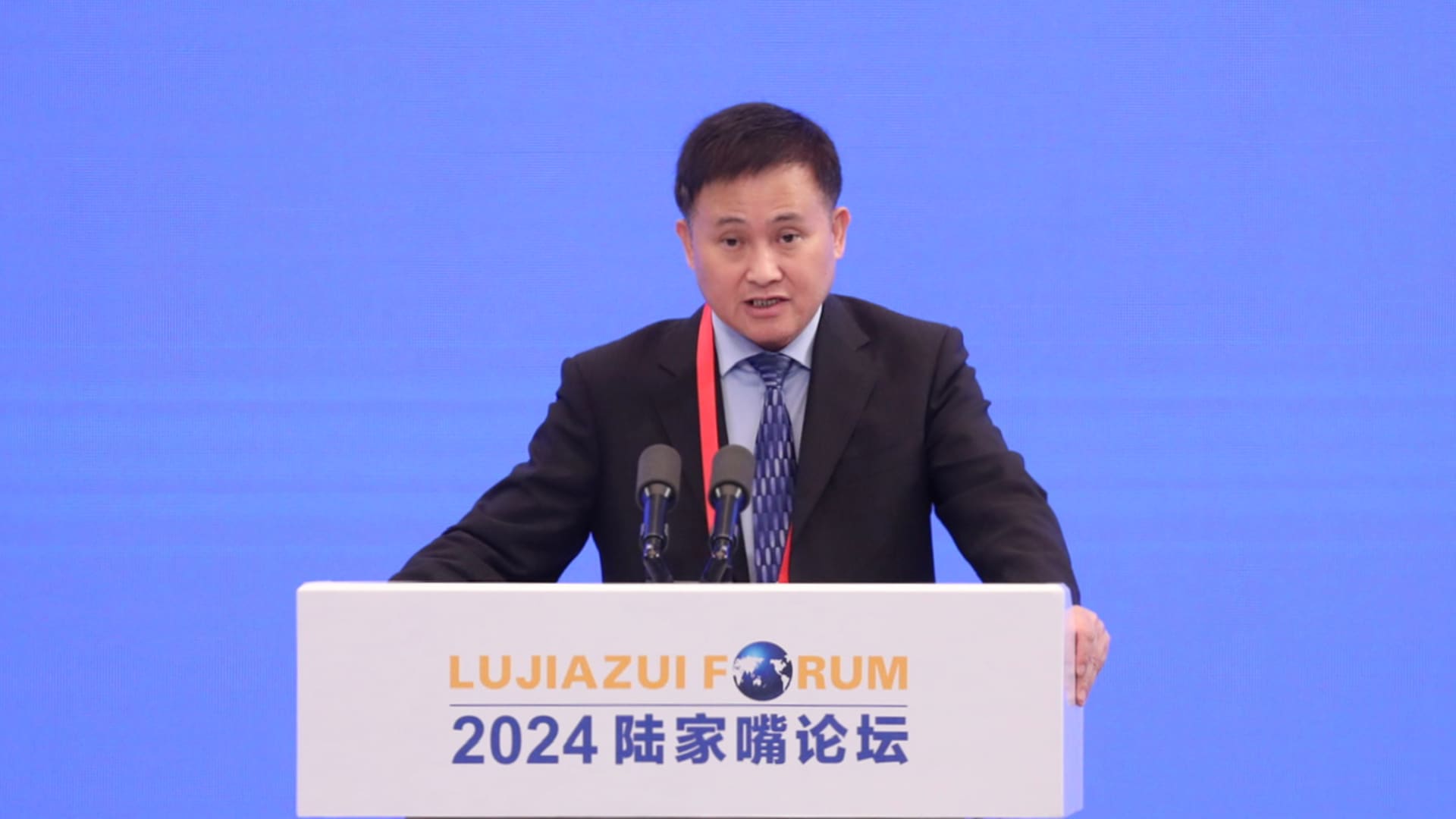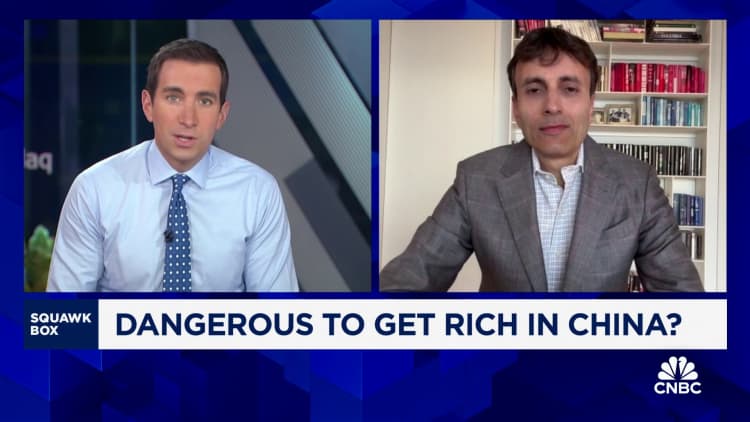
Pan Gongsheng, governor of the People’s Bank of China, delivers a speech during the 2024 Lujiazui Forum on June 19, 2024 in Shanghai, China.
Vcg | Visual China Group | Getty Images
BEIJING — People’s Bank of China Gov. Pan Gongsheng is set to speak to reporters Tuesday alongside two other financial regulator heads.
The relatively rare high-level press conference was scheduled after the U.S. Federal Reserve cut interest rates last week. That kicked off an easing cycle that theoretically gives China’s central bank further room to cut its rates and boost growth in the face of deflationary pressure.
Pan became PBOC governor in July 2023. During his first press conference as central bank governor in January, Pan said the PBOC would cut the amount of cash banks need to have on hand, known as the reserve requirement ratio, or RRR. Such policy announcements are rarely made during such events, and are typically disseminated through online releases and state media.
He then told reporters in March, alongside China’s annual parliamentary meeting, there was room to cut the RRR further. Such a reduction is widely expected in coming months.
Unlike the Fed’s focus on a main interest rate, the PBOC uses a variety of rates to manage monetary policy. The PBOC on Friday did not change its loan prime rate, a benchmark that affects corporate and household loans, including mortgages.
China’s government system also means that policy is set at a far higher level than that of the financial regulators speaking Tuesday. Such top-level meetings in July called for efforts to reach full-year growth targets and to boost domestic demand.

While the PBOC kept the loan prime rate unchanged in the days since the Fed’s cut, it has moved to lower a short-term rate, which determines the supply of money. The PBOC on Monday lowered the 14-day reverse repo rate by 10 basis points to 1.85%, but did not reduce the 7-day reverse repo rate, which was cut in July to 1.7%. Pan has indicated he would like the 7-day rate to become the main policy rate.
China’s economic growth has slowed, dragged down by the real estate slump and low consumer confidence. Economists have called for more stimulus, especially on the fiscal front.
“Policy easing, including monetary, fiscal, and housing policies, has been slow and incremental over the past year. This style of easing has in turn allowed various negative feedback loops to develop in the economy,” Goldman Sachs’ Chief China Economist Hui Shan and a team said in a Sept. 22 note.
Their analysis indicated local government bond issuance is going more towards addressing budget shortfalls rather than supporting additional growth.
Other high-level regulators to speak
Also scheduled to speak at Tuesday’s press conference is Li Yunze, minister of the National Financial Regulatory Administration, and Wu Qing, chairman of the China Securities Regulatory Commission.
The National Financial Regulatory Administration was created last year as part of Beijing’s overhaul of its financial regulatory system. It replaced the banking and insurance regulator, and expanded its role to oversee investor protections and regulating financial holding companies. Both were previously under the purview of the securities regulator and central bank, respectively.
Wu was appointed chair of the Securities Regulatory Commission in early February after a stock market rout. He previously served as head of the Shanghai Stock Exchange.